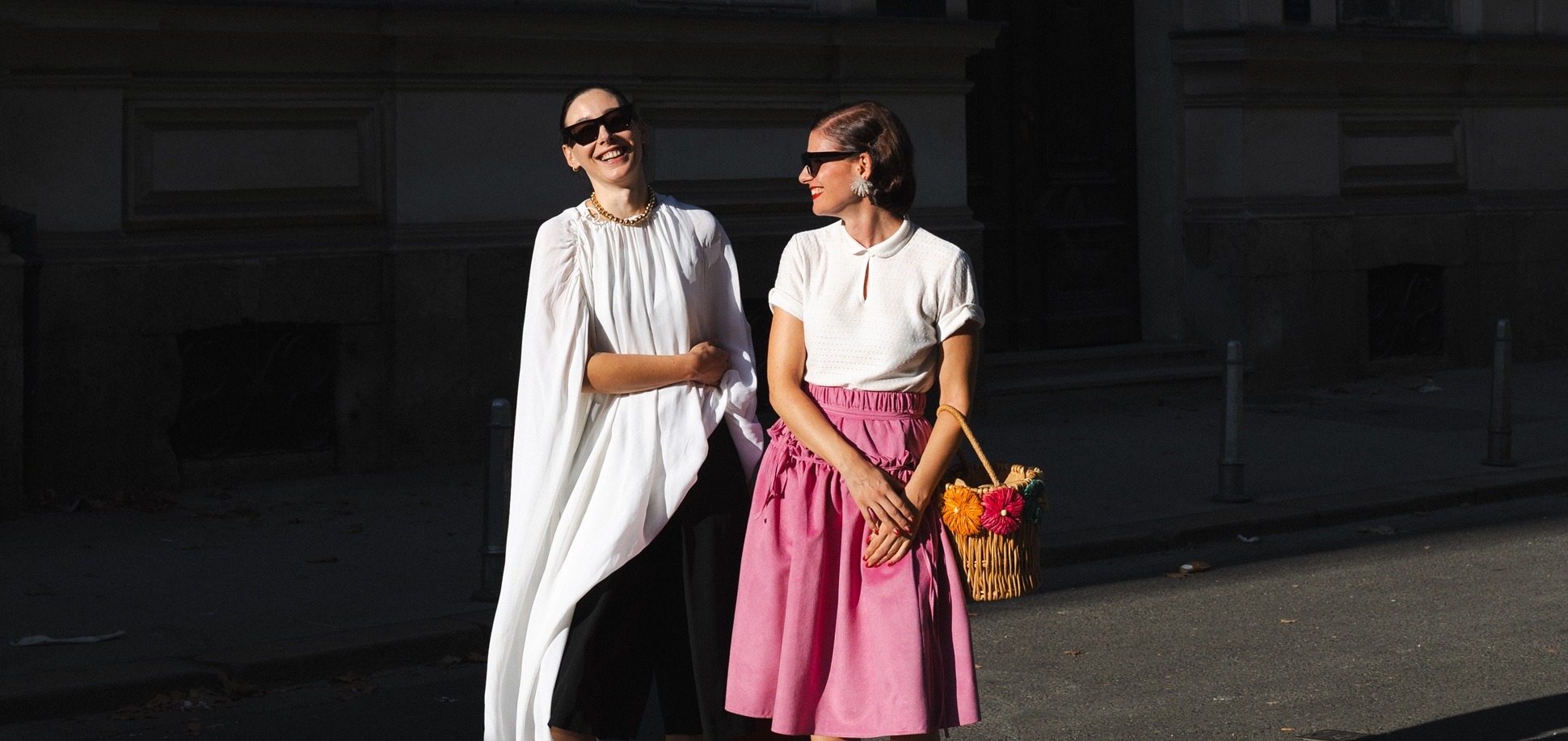
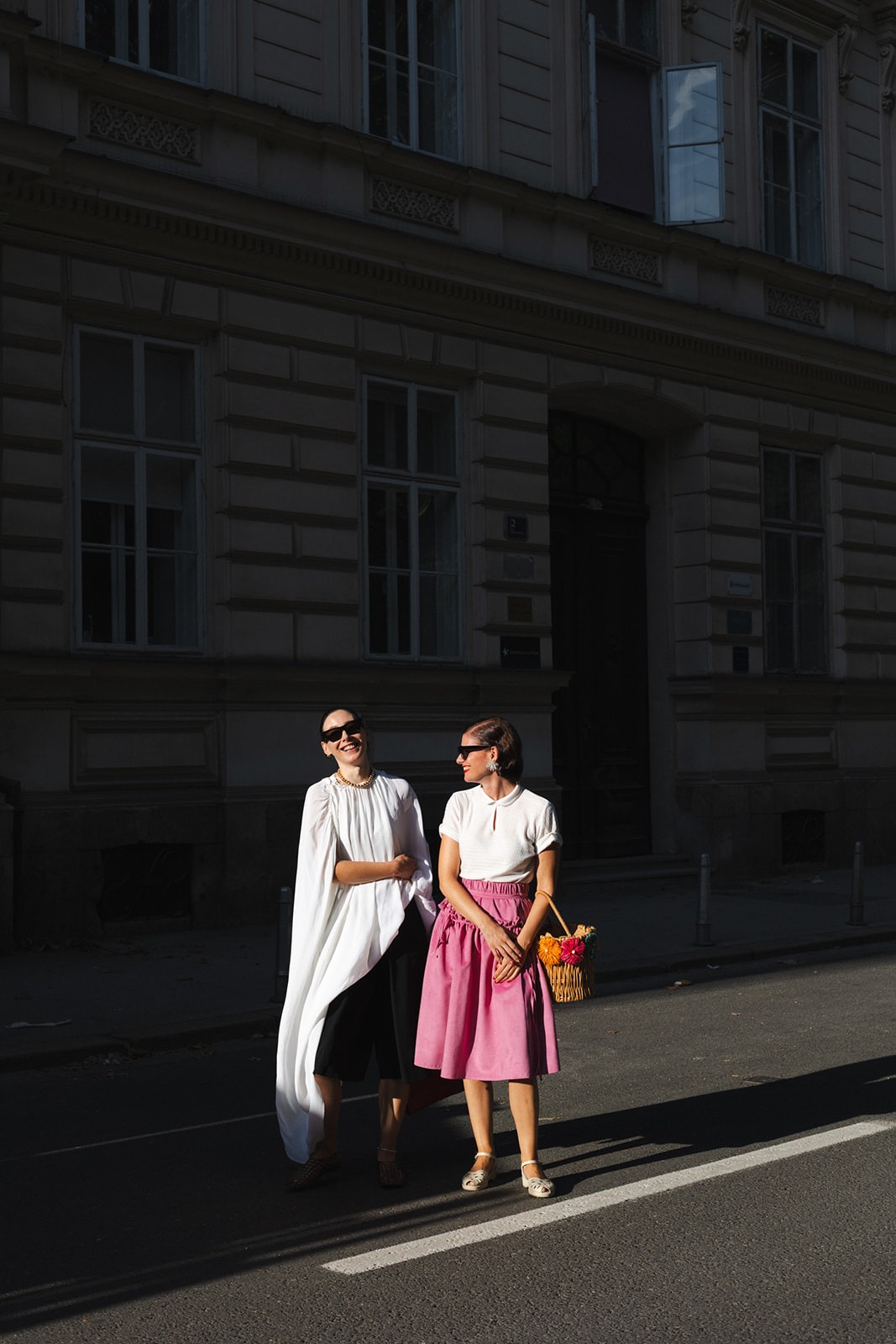
When I walk through Zagreb, and my thoughts aren’t lost in everyday worries or glued to my phone screen, I try to move through the streets as someone who has never been here before. I hope that, even though my steps have passed this way thousands of times, I’ll still notice something new, a balcony overflowing with flowers that somehow escaped my attention until now, a hidden passage leading to an even more hidden courtyard, or a decorative detail on a worn façade. With curiosity and a hint of playfulness, I like to imagine that the city where I’ve written all my memories might still surprise me and make me see it with fresh eyes.
That is exactly what the project Okolo//Around offers: through artistic installations and interventions in public spaces, it turns Zagreb’s streets into an open gallery and brings back the thrill of discovery and the unexpected. Familiar places suddenly appear transformed, urging us to pause, lift our gaze from our phones, and look around once more. As in previous years, this new edition of the project—from August 20 to 30—brought a breath of creative freshness to Zagreb’s streets. Out of twelve installations in total, two textile ones, seemingly very different, drew the attention of passers-by—both those seeing the city for the first time and those who know every corner of it. In Varšavska Street, artist and designer Ivana Mrčela presented a striking pink installation titled Our Sisters, while on Zrinjevac, fashion designer Marija Kulušić dressed a special tree in a festive garment and named it Shelter. Their sources of inspiration were also distinct: Mrčela drew from the idea of female solidarity, the force that throughout history has ensured the survival of communities and allowed individuals not to bear life’s burdens alone, while Kulušić found her muse in the safety, warmth, and softness of a shelter, the kind we used to build in childhood from bedsheets found in wardrobes and drawers. To find out what connects them nonetheless, we brought them to the same table. Their conversation unfolded in exactly the direction we hoped for, toward what they share: the weight and ease of the creative process, the storm of emotions that arises during creation, reflections on how society responds to works displayed in a “gallery” like the street, and the meaning their work ultimately carries.

Inia Herenčić
Ivana: Marija, this is your first installation in a public space. What inspired you to respond to the festival’s invitation and present your work outdoors for the first time?
Marija: I once had the opportunity to work in a space with very large dimensions—the ceilings were six meters high—and that was the first time I had to figure out how to divide such an area. The only solution was a kind of curtain rod. I had some old fabric that I dyed with rust, and the dyeing experiment turned out to be really interesting—it created a unique pattern. That experience stayed with me, so when the invitation to participate in the OKOLO festival arrived, I decided to take on a similar challenge again. From the very beginning, I was aware that the installation could easily “get lost” in the open space, so I knew it had to be large to make a strong impression.
The location itself, as well as the tree with its characteristic hollow, encouraged me to play with the idea of shelter. In the end, I decided to make curtains from recycled cotton sheets—some donated, some purchased. What I knew from the start was that I didn’t want to use polyester but rather secondhand fabrics. Anything else simply wasn’t an option, as it would go against my practice and working philosophy. I couldn’t predict exactly how it would look once installed because of its scale, but at some point, I had to declare it finished. When I reached 6.5 meters in height and around 7 meters in width, I realized there was no more room to expand. It turned out nicely, I think, even though I couldn’t foresee every element—after all, it’s an outdoor installation exposed to the weather.


Ivana: That’s exactly what I wanted to ask you—when you mention the weather, I noticed that some of the sheets are darker. Did you treat them yourself, or is that the work of the weather?
Marija: No, I didn’t intervene. At one point I thought about dyeing them with natural pigments since there’s a walnut tree next to my house, but in the end, I decided against it. Considering the size of the installation, I think that was a good decision.
Ivana: How long did it take you to complete everything?
Marija: Around ten days.
Ivana: The installation reminded me of childhood and those “shelters” we used to build out of bedsheets—our little “homes” where we lived out our secret stories.
Marija: Yes, that was my first association too. I also built those kinds of shelters in my room, stretching sheets from one side of the bed to the other. They were safe and beautiful places. Still, here I wanted to take it a step further—by gathering the fabric, I wanted to add a ceremonial element that suited Zrinjevac. The vintage curtain evokes the atmosphere of old cafés and hotels. In that way, I combined nostalgia and elegance with something naive and childlike.

Inia Herenčić
Ivana: As I was walking through the park, I noticed that children actually go inside the hollow of the tree and experience the installation as a real hideout.
Marija: That’s wonderful to see. The very fact that the installation is out in public means it will provoke reactions, and a work of this scale is almost impossible to overlook. It’s similar with your installation in Varšavska Street—it’s hard to pass by without it catching your eye and prompting a response.
Ivana: Yes, it drew attention even while we were setting it up, although we chose late evening hours on Tuesday.
Marija: Do you think the audience was primarily drawn to the theme of your work or to its visual aspect? How did you decide to focus specifically on the idea of female solidarity?
Ivana: My art almost always carries an activist element—I deal with animal rights, feminist topics, or giving voice to those often marginalized, such as textile workers. When I began thinking about this work, it felt like the right moment to once again give voice to women. At the same time, the installation can also be viewed through the lens of textile dolls, which here are made on a much larger scale.
Marija: Does that mean you consciously chose the doll motif as a kind of critique—a way of portraying the position of women in a patriarchal society?
Ivana: I only began thinking about that aspect later. At first, the choice was dictated by the material—the figures had to be light enough to hang in the air, which naturally shaped them into doll-like forms. Besides, this is just the beginning; I plan to make more of them, although in this case the number was determined by the space itself. What I knew from the start was that I wanted them to be pink, and the rest of the work evolved gradually during the making process. Beyond being a critique of society, I wanted Our Sisters to encourage viewers to become aware of something they might not notice in their surroundings—or within themselves. I remember a lawyer who told me, after seeing the work, that in twelve years of practice she had never experienced female solidarity. At the same time, this work brought me a lot of positive energy—women reached out to me, both those I know and those I had never met before. Their comments and support truly empowered me. That’s what stays with you, what you remember.
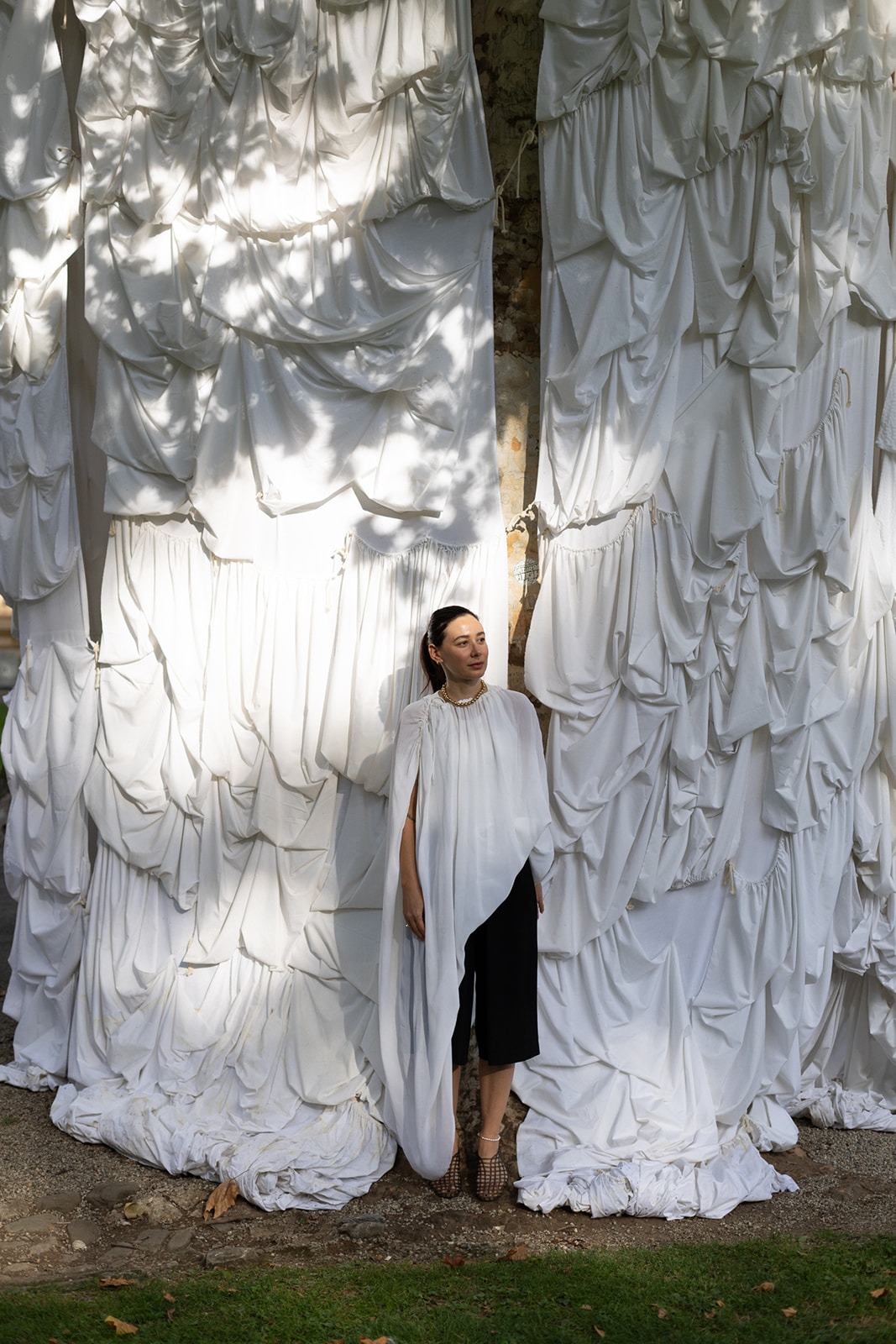
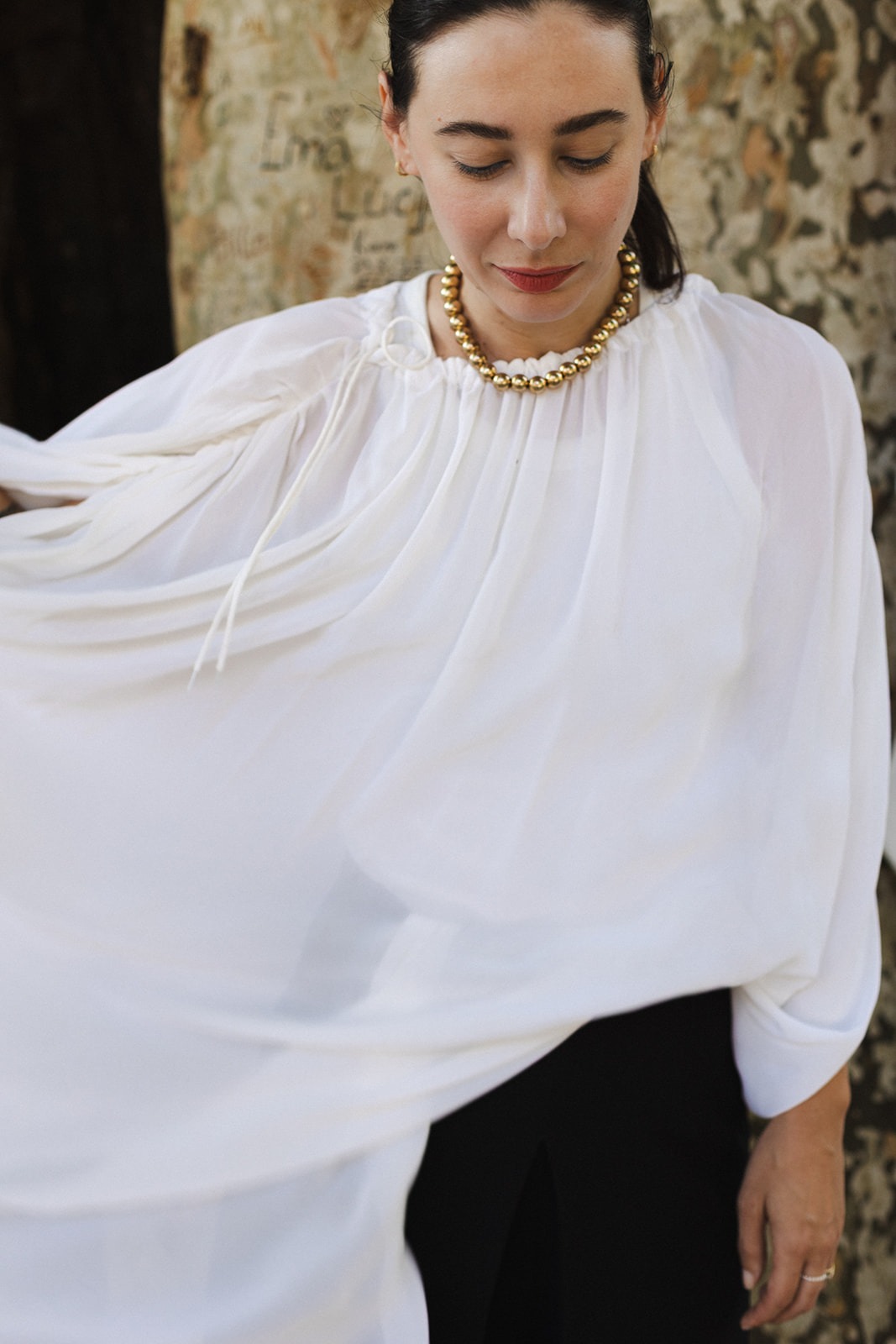
Marija: When you work, you can’t escape yourself. Whether I’m creating a new collection or an installation to be placed in a public space, it will always be a reflection of me. Your installation, unfortunately, was partially damaged just a few days after it was set up. How did you feel about that?
Ivana: Honestly, I expected it to provoke some kind of reaction. When you exhibit something in a public space, you’re aware that people will respond, although you never know how. Ultimately, art should provoke a reaction. But of course, you always secretly hope that those reactions will be positive, that the society you live in has some sensitivity toward art and artists. A work placed in public space becomes part of the community, and the way people treat it is actually a good reflection of the state of that society. And the street, after all, is a place where you can’t control much.
Marija: True, but the reality is that you can never control everything. Whatever you do, you’ll always be under scrutiny. The fact that something is displayed on the street is only a question of physical exposure. I think we’re actually always exposed. What ultimately matters is how we respond to the comments.
Ivana: I agree. Now that I think about it, I wouldn’t change a thing. Maybe I’d even be more critical. (laughs)
Marija: And it’s precisely these kinds of public reactions, like the ones we’ve seen with your work, that show why festivals like this are necessary. If people were more frequently exposed to art in public spaces, they would stop treating it as a curiosity. They’d get used to it—and in time, I believe their reactions would change too. The very fact that vandalism against artworks sparks so much discussion means that we do recognize its importance. We shouldn’t turn a blind eye to it. The artist who invested time and effort isn’t the only one affected when an installation is destroyed—so are all those who could have, or wanted to, experience it.
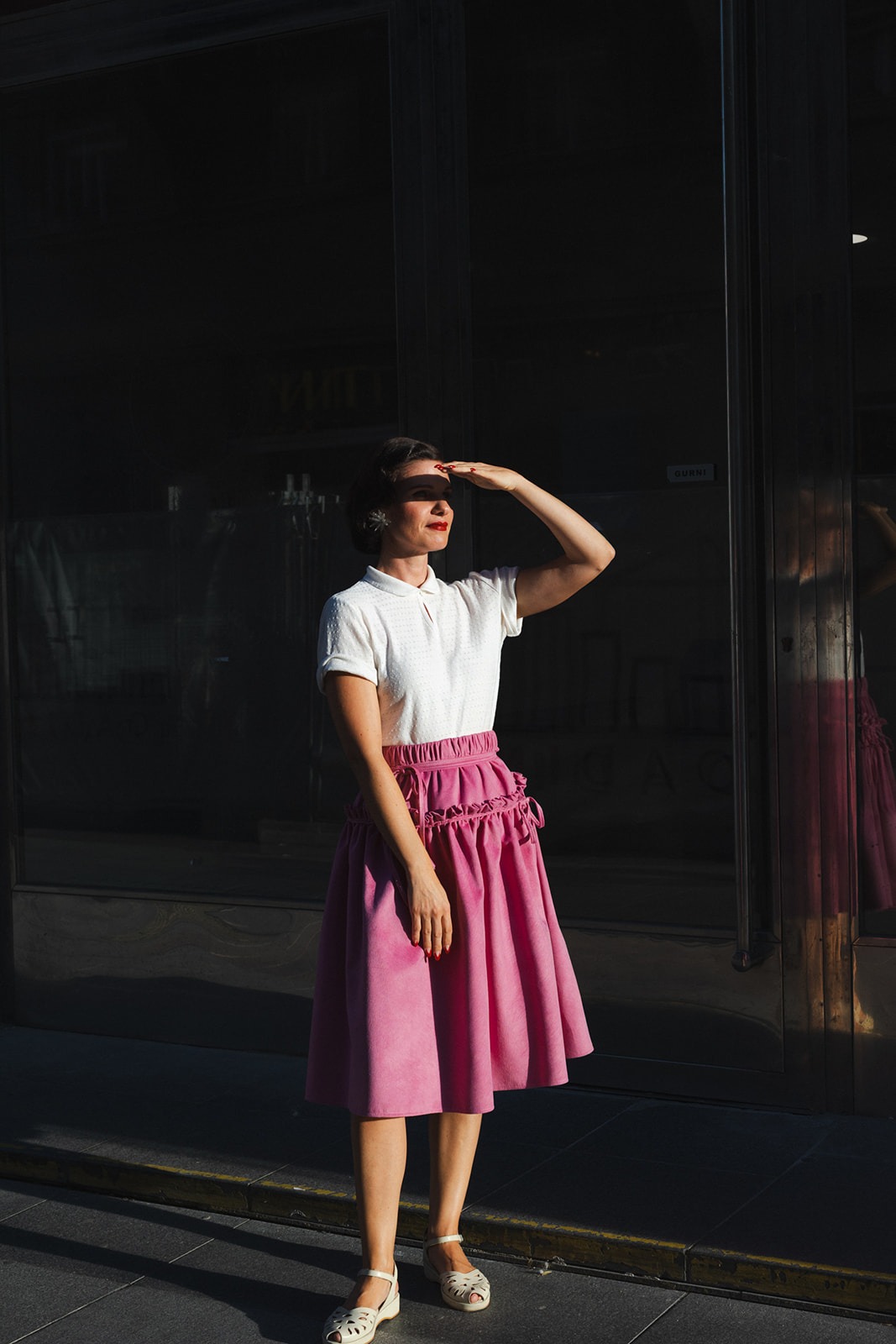
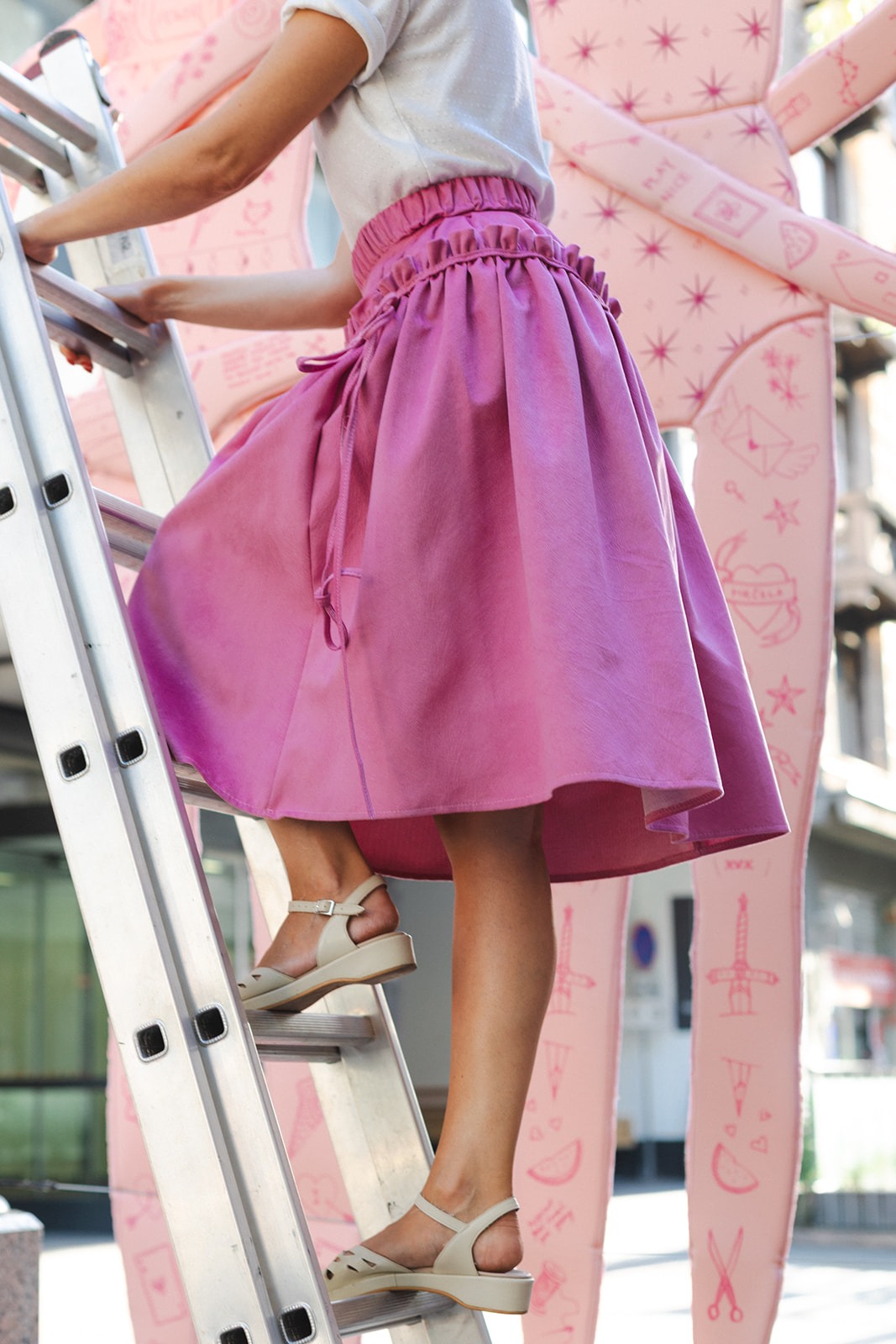
Ivana: I’m glad you mentioned time and effort. While working on Our Sisters, I went through a whole range of emotions—from moments when I liked the piece to those when I questioned every single detail. It was a real emotional roller coaster. When I finally finished it, I felt the need to step back and reflect in a new way. Creative work can be exhausting, but what matters is that, in the end, when you stand in front of your piece, it’s yours—it carries your mark.
Marija: Yes, that kind of questioning is inevitable. Whatever you do, when you finish, there’s a sense of relief. You need time to gather yourself before moving on. But every time, you go through the same process again—you always start from the beginning.
Ivana: I agree, and even though it can be difficult, I wouldn’t change that process for anything. You learn so much about yourself through it. Over the years, I’ve realized that I’ve become stronger, that criticism doesn’t affect me the way it once did. I know it will always exist. But the reason I create remains the same—love and the need to express that creativity, no matter the medium. I think I would be unhappy if I didn’t do what I do.
Marija: That’s both a curse and a blessing—because you know what you want, you’ve found your path.
Ivana: Yes, and even though it’s sometimes extremely hard, every night you go to bed knowing that your work has a purpose. That you yourself have a purpose.
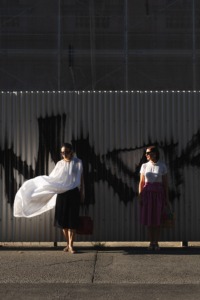
Inia Herenčić


